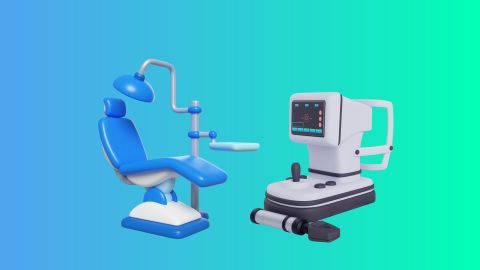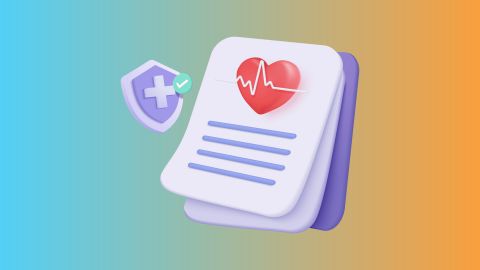What is a CPM machine?
A Continuous Passive Motion (CPM) machine is a therapeutic device used in physical rehabilitation to support joint recovery without requiring active effort from the patient. The machine moves a specific joint, such as the knee, shoulder, elbow, or hip in a slow, rhythmic motion within a set range.Typically recommended after orthopaedic surgeries like joint replacements, ligament reconstructions, or fracture repairs, CPM machines help in maintaining joint mobility and preventing stiffness during recovery. This type of medical equipment plays a critical role in ensuring that the healing process does not compromise flexibility or joint function.
How does a CPM machine work?
CPM machines function by mechanically moving the affected joint through a controlled range of motion. This movement mimics natural joint activity and aids in maintaining flexibility without exerting pressure on muscles or ligaments.- The patient places the limb (knee, arm, etc.) in a designated section of the CPM machine.
- The device is set to a specific range of motion based on medical advice.
- The machine initiates continuous flexion and extension movements of the joint.
- Motion parameters such as speed, duration, and angle can be adjusted according to recovery needs.
- The gradual progression in movement supports safe rehabilitation without causing strain or discomfort.
Benefits of using a CPM machine
The use of CPM machines in rehabilitation offers numerous clinical and functional benefits. It is particularly effective during the early stages of recovery when active movement is limited.- Promotes early mobility after surgery without patient exertion.
- Enhances joint flexibility and range of motion.
- Prevents joint stiffness and tissue adhesions.
- Reduces post-operative pain and swelling.
- Stimulates synovial fluid circulation, which nourishes cartilage.
- Supports better alignment and healing of tissues.
- Shortens rehabilitation time and improves overall outcomes.
- Minimises the risk of joint contractures and secondary complications.
Types of CPM machines
CPM machines are available in various types, each designed to support specific joints and rehabilitation goals. Understanding the available options helps in choosing the most appropriate device for recovery needs.- Knee CPM machine: Most commonly used, especially after total knee replacement or ligament surgeries.
- Shoulder CPM machine: Designed to support the complex range of shoulder movements after rotator cuff or joint repair.
- Elbow CPM machine: Useful for flexion and extension therapy after elbow fractures or ligament injuries.
- Hip CPM machine: Facilitates movement of the hip joint post-surgery or after muscle and ligament reconstruction.
- Ankle CPM machine: Ideal for recovery from tendon repair or injury to the ankle joint.
- Hand and wrist CPM machine: Offers fine-motion therapy for hand, wrist, or finger injuries, commonly used in plastic and reconstructive surgeries.
Features of CPM machines
Modern CPM machines are equipped with features that enhance their usability, patient comfort, and therapeutic outcomes. These features vary across different models and should be considered while selecting the right equipment.- Adjustable range of motion to suit patient recovery stages.
- Digital control panels or remote-controlled settings.
- Lightweight and foldable design for ease of transport.
- Timer functionality to set session duration.
- Variable speed control for movement adjustments.
- Soft, cushioned limb supports to reduce discomfort.
- Emergency stop mechanisms for safety.
- Pre-set therapy programmes based on joint type and therapy requirements.
Price of CPM machine in India
The cost of CPM machines in India varies based on the type of machine, brand, features, and intended use (clinical or home care). Below is an indicative price range across various types:| Type of CPM Machine | Indicative Price Range |
| Knee CPM Machine | ₹15,000 – ₹20,00,000 |
| Hip CPM Machine | ₹2,00,000 – ₹20,00,000 |
| Elbow CPM Machine | ₹50,000 – ₹15,00,000 |
| Shoulder CPM Machine | ₹1,50,000 – ₹18,00,000 |
Prices may vary depending on the brand, specifications, and additional service packages such as extended warranties or home installation.
Factors to consider before purchasing a CPM machine
Choosing the right CPM machine requires evaluating several important aspects to ensure it aligns with both clinical requirements and patient comfort.- Type of joint being treated and the machine’s compatibility.
- The adjustability of motion angles and speed.
- Ease of operation, especially for home users or elderly patients.
- Machine portability and storage convenience.
- Availability of spare parts and service support.
- Warranty terms and manufacturer reputation.
- Pricing in comparison to features offered.
- Availability of accessories or therapy modes for customisation.
Maintenance tips for CPM machines
Regular maintenance ensures that the CPM machine functions efficiently and lasts longer. Proper care also reduces the likelihood of mechanical faults during therapy sessions.- Wipe the machine daily with a dry or slightly damp cloth after use.
- Avoid exposure to moisture or harsh cleaning agents.
- Periodically check mechanical parts for signs of wear or looseness.
- Ensure cables, connectors, and remote controls are in good condition.
- Store the machine in a cool, dust-free environment when not in use.
- Lubricate moving parts if specified in the manufacturer’s manual.
- Schedule professional servicing periodically, especially for clinic-based machines.
- Follow the manufacturer's user guide for safety and longevity.
Conclusion
CPM machines play a transformative role in rehabilitation, offering passive joint movement that aids in faster and more effective recovery. With various types available for different joints, these machines provide tailored solutions to meet individual therapy needs. Evaluating features, price, and service support ensures you choose the right equipment for your recovery journey.For those looking to make this investment easier, medical equipment finance offers a convenient solution to manage costs without compromising on quality or care.




